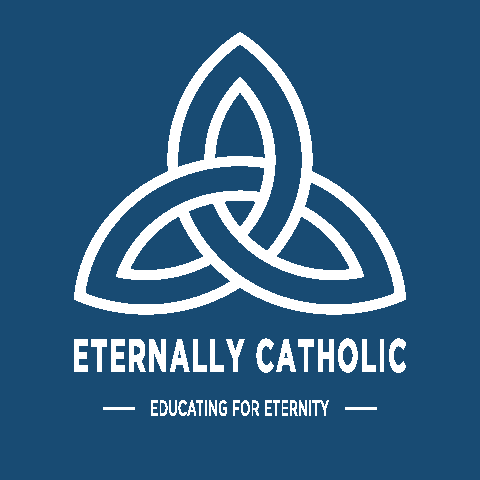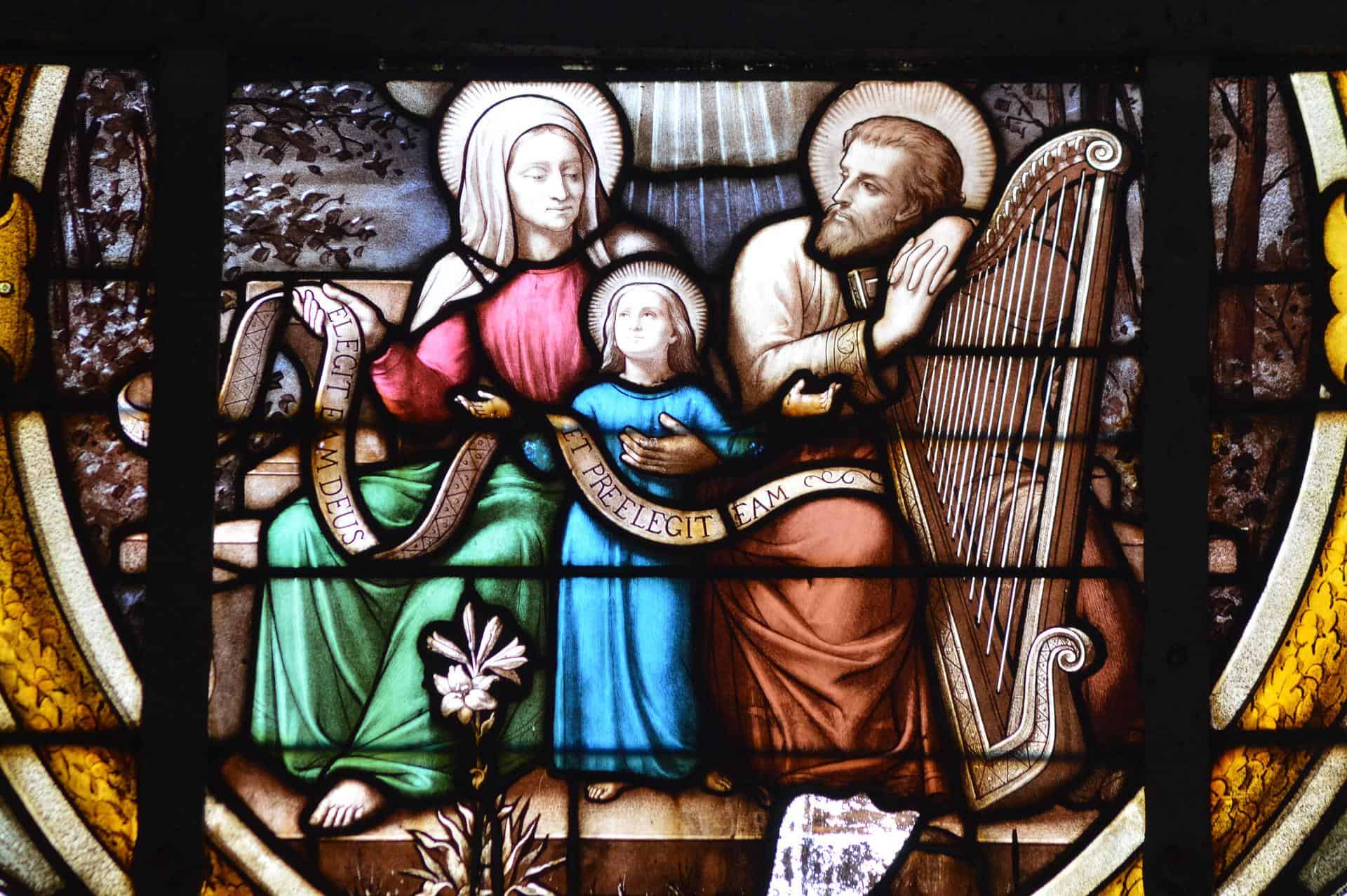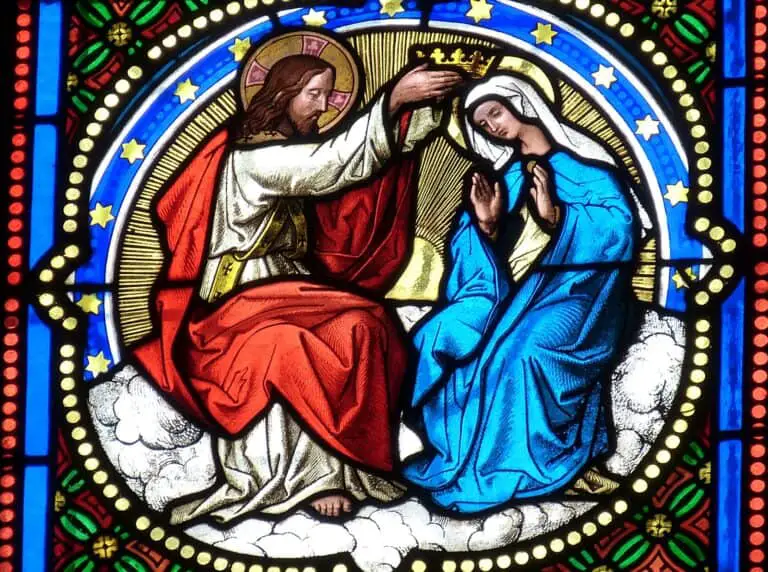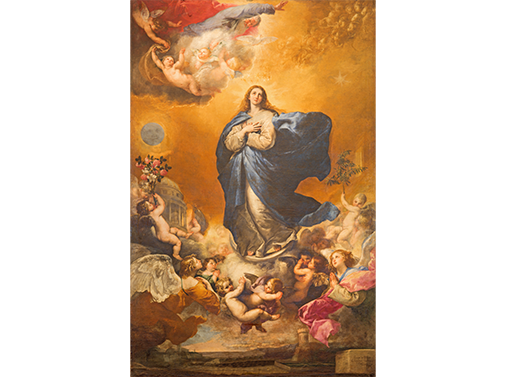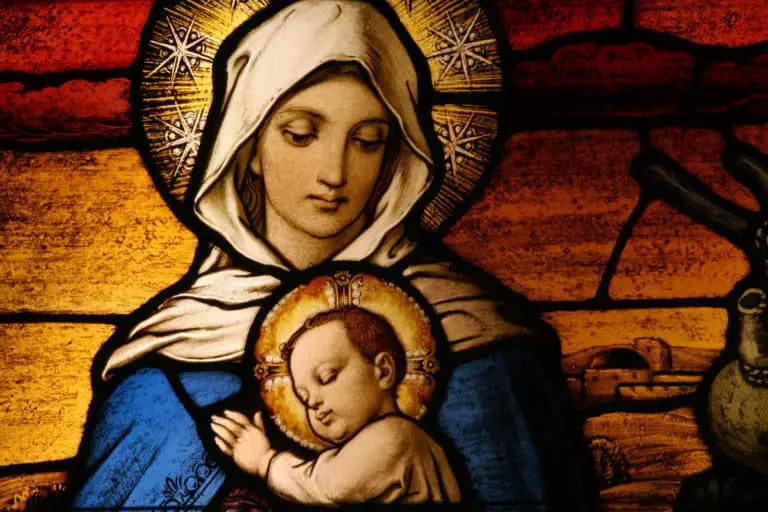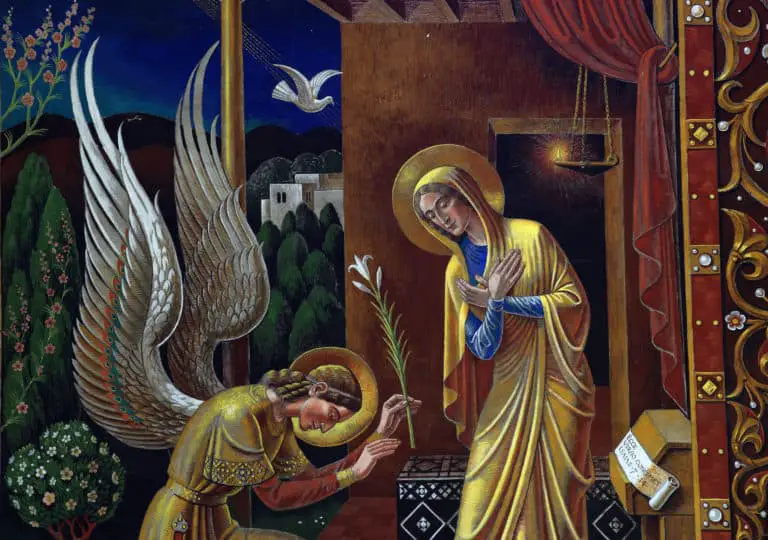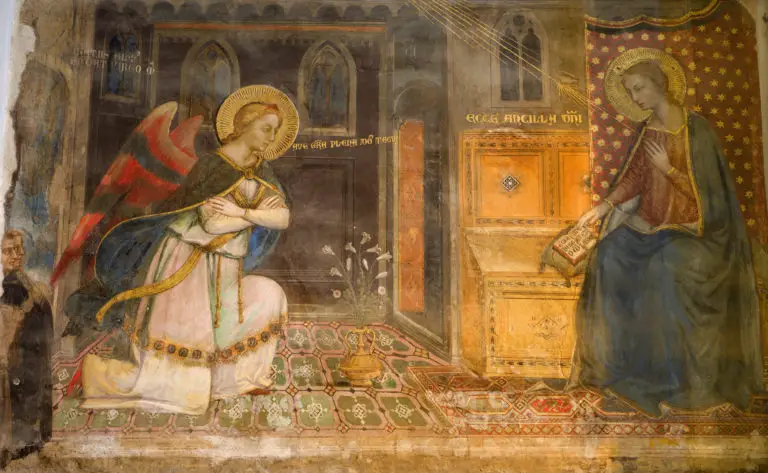Where can I find the story of Mary the Mother of Jesus?
The Scriptures are quiet on the life of the Mother of Jesus. There is no mention of her life before the Annunciation (St Luke 1: 26-38) and following the coming of the Holy Spirit at Pentecost (Acts 1: 13; 2). However, there are resources that we can draw some learning about the life of the Mother of Jesus, Mary.
The entire Books of the Bible are centred on the coming and fulfillment of the Messiah, however there is not much we can know about those that God chose to cooperate and partake in the redemption. Whilst Jesus is the central figure, His Mother Mary was chosen by God and accepted the invitation with Her fiat to bring the Messiah into the world. Whilst the Scriptures are silent on Mary’s life, we can draw from resources that provide an insight into her life before the Birth of Jesus and following the Ascension.
The Life of Mary the Mother of Jesus – The Early Years
The mention of Jesus is not exclusive to the Bible, for instance, first century Romano-Jewish historian Flavius Josephus who is known for his works The Jewish War and Antiquities of the Jews wrote the following on Jesus:
“Now, there was about this time Jesus, a wise man, if it be lawful to call him a man, for he was a doer of wonderful works – a teacher of such men as receive the truth with such pleasure. He drew over to him both many of the Jews and many of the Gentiles. He was [the] Christ; and when Pilate, at the suggestion of the principal men amongst us, had condemned him to the cross, those that loved him at the first did not forsake him, for he appeared to them alive again the third day, as the divine prophets had foretold these and ten thousand other wonderful things concerning him; and the tribe of Christians, so named from him, are not extinct at this day”. (Antiquities of the Jews, Flavius Josephus, Book 18: Chapter 3, verse 3).
Likewise, there are resources that reference the life of Mary the Mother of Jesus. Whilst these are not regarded as divinely inspired nor do they date to the time of Jesus, they nevertheless give us an account of the life of Mary the Mother of Jesus. The Protoevangelium of James or often referred to as the Infancy Gospel of James does provide some small facts such as the name of Mary’s parents, their childless years until God’s intervention, Mary’s entry into the temple at the age of three (as promised by Her parents). However, there is so much not to mention that I will not be recommending this as a resource, it is no wonder why the Catholic Church eliminated this and other books from the Canon of Scripture.
However, the mystical writings of Venerable Mary of Agreda (1602-1665) and Blessed Anne Catherine Emmerich (1774-1824) are remarkable works of revelations from two Holy women. I have the privilege of having in my possession both of their works. I will be using the works of Venerable Mary of Agreda ‘The Mystical City of God: The Divine History and Life of the Virgin Mother of God (Volumes I-IV).
(Note: The revelations made to Venerable Mary of Agreda and Blessed Anne Catherine Emmerich are of a private nature and hold no dogmatic authority, we can choose to believe them or dismiss them.)
Is ‘The Mystical City of God’ collection on the list of banned books?
“La Ciudad de Dios” (The City of God) in Spanish, of the Venerable Mary of Jesus of Agreda was placed on the List of Banned (or Prohibited) Books (Index Librorum Prohibitorumb for a short time and was due to a poorly translated and published version around 1678 in France by the Sorbonne (College in Paris established in the 13th Century). Dr. Louis Elias du Pin and Dr Hideux were influenced by two heresies – Jansenism and Gallicanism. Pope Clement XI called Dr du Pin “a man of pernicious doctrines” and Dr Hideux was a fanatical Jansenist.
What is Jansenism?
Posited by Cornelius Jansen (1585-1638) is an error that denies the role of “free -will” in the acceptance and use of grace. God’s grace cannot be resisted and does not require human assent.
What is Gallicanism?
Gallicanism plays down the authority of the Papacy in that the Pope is first among equals (primus inter pares).
Placing such a translation under the List of Prohibited Books was justified with such an erroneous translation that would harm the Catholic faith and the faithful.
It would be foolish to allow such private revelations not to undergo some (or even extensive) level of scrutiny. When reading the Mystical City of God, it is necessary to read the works with the Bible in mind to ensure that nothing contradicts the inspired books.
Following Venerable Mary of Agreda’s death in 1665, five years had elapsed when the City of God was published. The French First Edition appeared around 1678. This was the version that caused the censorship of the book and upon examining the books, the Spanish Inquisition placed them on the Index of Forbidden Books.
Upon the request of King Charles II (amongst others) made to Pope Innocent XI to lift the ban, the decree came in 1681 via His Holiness to lift the ban.
Subsequently, the followings popes approved the works:
- Popes Alexander VIII (1689-1691).
- Clement IX (1667-1669).
- Benedict XIII (1724-1730).
- Benedict XIV (1740-1758).
- Popes Pius IX (1846-1878)
- Leo XII (1878-1903).
- Pius XI (1922-1939).
The collection has been handed imprimaturs in Spanish, Italian, French, Portuguese, German, Latin, Arabic, Greek, and Polish. The English edition translation from the Spanish edition commenced in 1902.
It received an imprimatur from Archbishop Edwin V Byrne, D.D., Sante Fe New Mexico on February 9, 1949. The source of this article.
Who is Venerable Mary of Agreda?
Venerable Mary of Agreda was born María Coronel, on April 2, 1602, in the little town of Agreda in northern Spain to Francis Coronel and Catherine of Arana from Spanish nobility. Maria was one of eleven children of which seven died in infancy. All four remaining children would enter religious life – Francis, Joseph, Mary, and Jeronima; along with their parents.
Maria of Agreda and her mother entered the religious life and the convent of the Immaculate Conception, which her father helped build, January 1619. Her father and two brothers also entered religious life as Franciscan friars.
After eight years into her entry as a religious sister, Maria of Agreda was made Abbess of the convent, despite her unwillingness. Apart from a three-year interval, she remained as Abbess until her death in 1665. Maria brough sanctity and fervour to the convent.
One of the supernatural gifts that Mary was privileged with was the gift of bilocation. She was known as the “Lady in Blue” as described and identified by the Native Americans and Mexicans. Mary was handed the task of catechising, therefore between 1620 to 1631 she would make regular visits to Native Americans and Mexicans.
Maria of Agreda entered eternal life in 1665 and seven years later on June 21, 1672 the cause for her canonization was opened by the Congregation of Rites.
Is Venerable Mary of Agreda’s body incorrupt?
The casket of Venerable Mary of Agreda was opened in 1909 and her body was found to be incorrupt, and a physician’s report was made on the state of the body.
A further 80 years would elapse when in 1989 another examination was conducted and reported that the body had not deteriorated and was consistent with the 1909 medical report.
The cause for her canonisation remains in limbo. The incorrupt body of the holy Abbess form the 17th Century would be clear evidence of sanctity, but this is still pending.
Now that the authenticity of the works and its’ author have been clarified, I will proceed to provide an overview of the life of the Mary, Mother of Jesus.
Who are the parents of Mary, the Mother of Jesus?
The Catholic Church recognises that the parents of Mary are Joachim and Anne. This historical fact is supported by the both mystics – Venerable Mary of Agreda and Blessed Anne Catherine Emmerich through their private revelations which have been recorded in volume sets and I highly recommend owing and reading, especially spiritual nourishment.
What is known about the parents of Mary, the Mother of Jesus?
Mary’s father, Joachim lived in Nazareth. He was known to be well versed in the Sacred Scriptures, with the reputation of being holy, very faithful, humble, honest and modest. He also served in the Temple.
The Mother of Mary is Anne, who had a house in Bethlehem. She was a most humble, virtuous, chaste, holy and beautiful maiden. Anne was also well versed in the Holy Scriptures and excelled in the application of the Theological virtues of Faith, Hope and Charity.
The couple were both chaste and virtuous and through the intervention of the Angel Gabriel, who was sent to communicate the espousing of Joachim to Anne, which would be part of God’s plan by which the New Ark of the Covenant would house the Messiah. Therefore, the Angel Gabriel was sent to St Anne to accept St Joachim as her spouse. However, this message was communicated to Joachim not through a vision but in his sleep. The holy couple would fulfill God’s request to marry married and lived in Nazareth.
What was life like for Joachim and Anne as a married couple?
Joachim was 46 years of age and Anne 24 years of age when they married. They lived a life of perfect espousal – they were faithful and ever upright in the sight of God. There hearts, mind and souls were in peaceful union with each other and with God. They never entertained a moment of quarrel nor did they hold grudges towards each other and towards their neighbour.
They continued to serve God first, their neighbour and each other, in perfectly exercising the Theological virtues of Faith, Hope and Charity.
Time would see that the couple had not been graced with the blessing of a child and this would be the case for twenty years into their married life. This placed tremendous pressure on Joachim and Anne, especially from the Jewish community, who saw childlessness as a curse from God. Whilst this was a suffering for Joachim and Anne, they did not waiver from their commitment, faithfulness, peacefulness towards each other, God and others. They offered their childlessness and shame as a sacrifice, and prayed continually without ceasing to God. They were viewed by the Jewish community as being unfortunate and excluded from the benefits of the Messiah.
As an example of this humiliation by the Jewish community, Joachim’s prayers and offerings in the Temple were judged as unworthy and unaccepting to God by an inferior Priest because he and his holy wife were childless. Joachim was a man who would not be disheartened by the attitude of the people towards them, though ashamed and humiliated, Joachim continued to pray and humble himself before God.
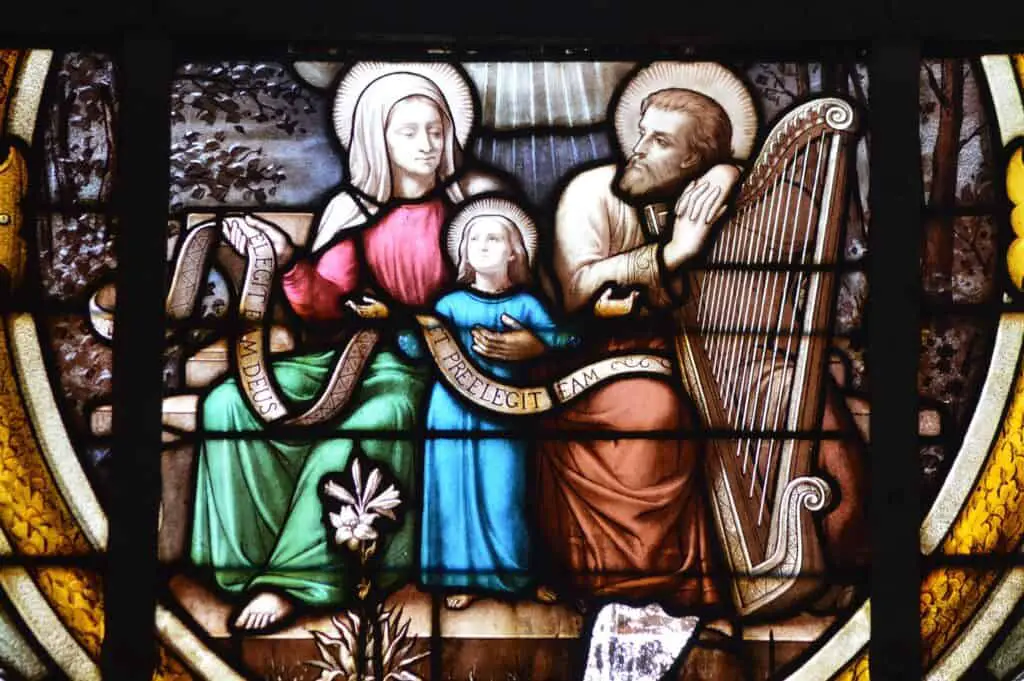
Did God hear the prayers of Joachim and Anne?
After twenty years of enduring this suffering, the Lord had heard the prayers, suffering and offering of the holy couple. As in the case of the conception of St John the Baptist to the elderly Elizabeth and Zechariah, The Holy Trinity would communicate to the celestial Heavenly Angels the arrival of the Daughter of God, Spouse of the Holy Spirit and Mother of the Messiah.
The Angel Gabriel would now be sent to Anne to announce the conception of a daughter whom she will name Mary and that Mary would be the chosen one to be the Mother of the Messiah. Anne would hold on to this knowledge.
As in the espousal to Anne, Joachim had this joyful news communicated in his sleep. However, Mary was to be consecrated from childhood to the Temple. Following this news from the Angel Gabriel, Anne would conceive at the age of 44 and Joachim was 66 years of age.
How did the conception of Mary take place?
Anne and Joachim conceived Mary in the same order of nature, however the Almighty God had freed the conception from imperfections and disorders and permitting only what was strictly required according to nature, that is the proper material be furnished for the formation of the most perfect substance within the limits of a mere creature.
Divine Grace had guided the conception of Mary. This act and the imperfections including Original sin were exempted from the conception of Mary. This was reserved solely for the Mother of the Most High. This was the singular Grace favoured for the Mother of Jesus, the Second Person of the Holy Trinity.
Anne, who was sterile was miraculously restored for the conception of Mary but would return to her former sterile state following the conception and never to conceive again. Joachim, whilst not sterile, but due to his advanced age, a level of energy was given to him to cooperate with the Divine, in a perfect and plenitude manner. Therefore, the facilities and the material were of the natural order, but the manner of moving and restoring them was miraculous and moved by the Divine.
Mary was conceived on a Sunday which corresponded with the creation of the Angels whose Queen She will be.
In the Mystical City of God, the infusing of the soul is of interest as was revealed to Venerable Mary of Agreda as taking place in this way and differing for a male child as to a female child.
In infusing the rational soul, a male child body’s rational soul is infused on day forty following the existence of the physical body. As for a female child, the rational soul is infused on day eighty. However, for Mary this was accelerated by the Almighty and the rational soul (free from Original Sin) to just seven days.
It was shown that the celebration of the Feast of the Immaculate Conception which the Catholic Church celebrates on 8 December is the day the Immaculate soul (Free from any stain of Original Sin) was infused into Her body.
The Soul of the Mother of the Messiah was filled with Grace and gifts above the highest Seraphim, possessed perfect justice, superior to Adam and Eve. She was to engage in the work of the Almighty and never to remain idle.
Mary was born on the 8th of September and named Mary on the eight day after her birth. Sixty-six days after the birth of Mary, Anne fulfilled her days of purification as required by the Law. Simeon received the infant Mary in the Temple who was prompted by the Spirit into the greatness of this Child. In addition, a thousand Angels were appointed as guardians of Mary, with many other Angels appointed to serve the Mother of God, especially following the Conception of the Messiah.
What was Mary like as a child from her infancy to twelve years of age?
Not only was Mary’s bodily conception and soul conception unique and reserved for her role that she would play in the Redemption, but she was also privileged with several qualities including her ability to speak by the age of one and a half, however remained silent and showed tremendous reverence, love, and continually sought the Blessings of Her parents.
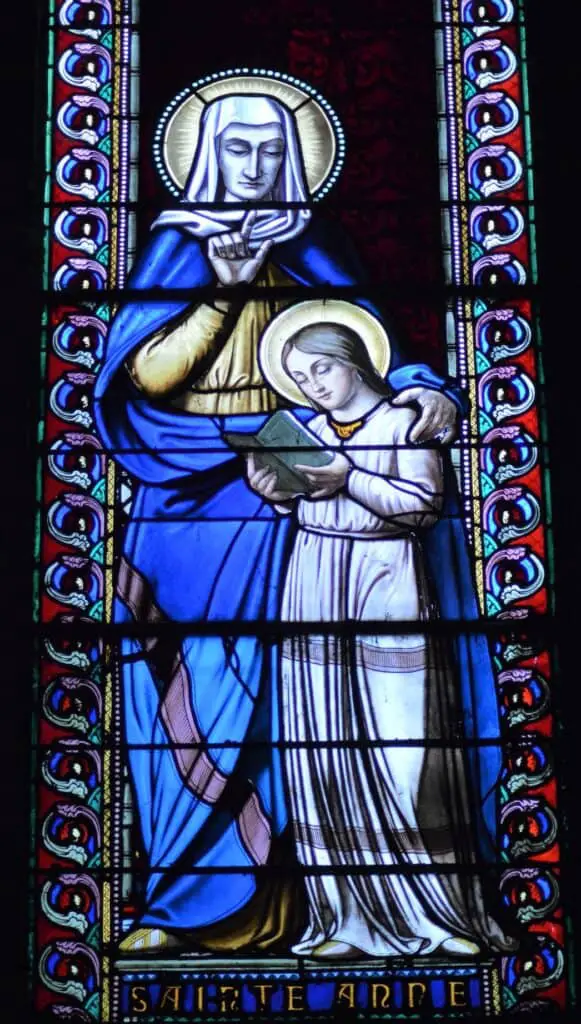
The Almighty, to whom she prayed for the arrival of the Messiah, communicated this special outward faculty to begin communicating with human creatures, to wish she obliged as a humble servant.
When the child Mary had turned three years of age, it was time to offer Mary to the Temple, as a fulfillment of their promise to God. The holy, obedient and humble servants Joachim and Anne, as decreed by the Lord, offered their Holy and humble Child, Mary to the Temple. Mary was received by the Priests and Simeon consigned Mary to the Prophetess Anne, who took charge of the Child Mary, as ordained to by the Lord.
Mary exercised the Theological virtues of Faith, Hope and Charity, along with many God-like qualities, towards the other maidens and to the superiors of the Temple. She treated each with love, respect and humility. However, Mary would undergo a number of struggles, not to test her faith nor her virtue, but to increase her glory before God. She would also advance in the natural experiences and understand better the science of suffering. This was not a result of our fallen nature, for Mary was not subject to the same fallen nature as we are, as she was freed from the stain of Original Sin and it’s consequences. Here sufferings included:
- suspension of the Lord’s continual visions,
- accusations were made against Mary by the other maidens,
- God allowed Lucifer and the Demons to Tempt Mary directly and through others not like our temptations where we yield easily, Mary’s temptations were like Genesis states in Chapter 3: 15 “you will strike her heel”.
These lasted till the age of twelve.
When did Mary’s parents die?
After just six months following Mary’s entrance into the Temple, the Lord communicated the imminent passing into the Limbo of the Just of Her Father Joachim, whom She loved with a Holy love.
Joachim died at the age of sixty-nine years.
Following Mary’s 12th birthday, Mary received word from the Angles that Her Mother Anne was to enter the Limbo of the Just. Mary’s heart was filled with compassion and prayed for a happy death for her mother Anne. Through His love, God granted that Mary be transported by the Angels to be bedside of her dying Mother.
Anne died at the age of sixty-six. Therefore, Mary was orphaned by the age of twelve, which will lead to a new chapter in her life – the Messiah’s arrival was near.
How did Mary meet and marry Joseph?
Mary had made a vow to be chaste, single, and consecrated to God, however the Almighty had other plans. At the age of thirteen and six months the Most High revealed to Mary the command to take a husband. It was known by the Priests of the Temple that Mary had the desire not marry, however the Most High had made it known that the Maiden Mary be married, and this was fitting of an orphan firstborn daughter.
The marriage of Mary and Joseph took the following path:
A day was chosen whereby all single and unmarried men from the race of David and in compliance with the Law, were called together in the Temple of Jerusalem.
Mary had just turned 14 years of age. Mary was of the same Davidic lineage.
The one who would be chosen, Joseph was thirty-three years of age and from an early age of twelve, Joseph made and kept the vow of chastity. He was a relation to Mary and known for his purity of life and holiness.
A staff was place by each of the potential husbands in the Temple. A sign would be given as to whom would be chosen by God as the husband of Mary. Only one of the staff’s would blossom, and that was the staff of Joseph. To ensure this sign was clear, a pure white dove descended on the head of Joseph.
God spoke to Joseph interiorly:
“Joseph, my servant, Mary shall be thy spouse; accept her with attentive reverence, for She is acceptable in my eyes, just and most pure in soul and body, and thou shall do all that She shall say to Thee.”
Mary and Joseph were married and travelled to live in Nazareth. They lived in the house of Mary’s parents in which Mary had inherited.
Mary and Joseph vowed to live in chastity as brother and sister. Mary and Joseph contested between themselves as to who should obey the other. The Blessed Virgin Mary won out in the end to humble Herself before Her spouse as He is the head of the family. She would not invert this natural order. The life of Mary, from God’s preparation for her arrival, to her espousal to Joseph, shows God directing her life for the role she was to play in the arrival of the Messiah. Her parents’ and Mary’s cooperation in God’s plan is the perfect example of surrendering and entrusting all to God.
